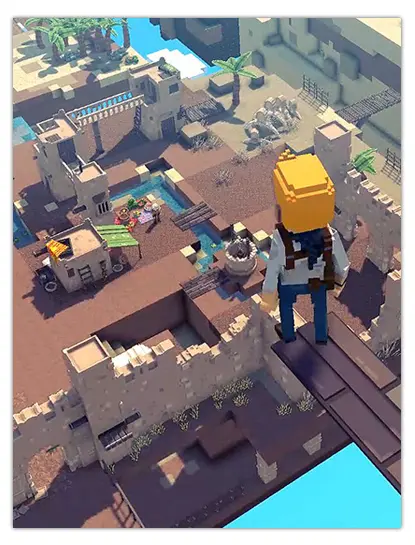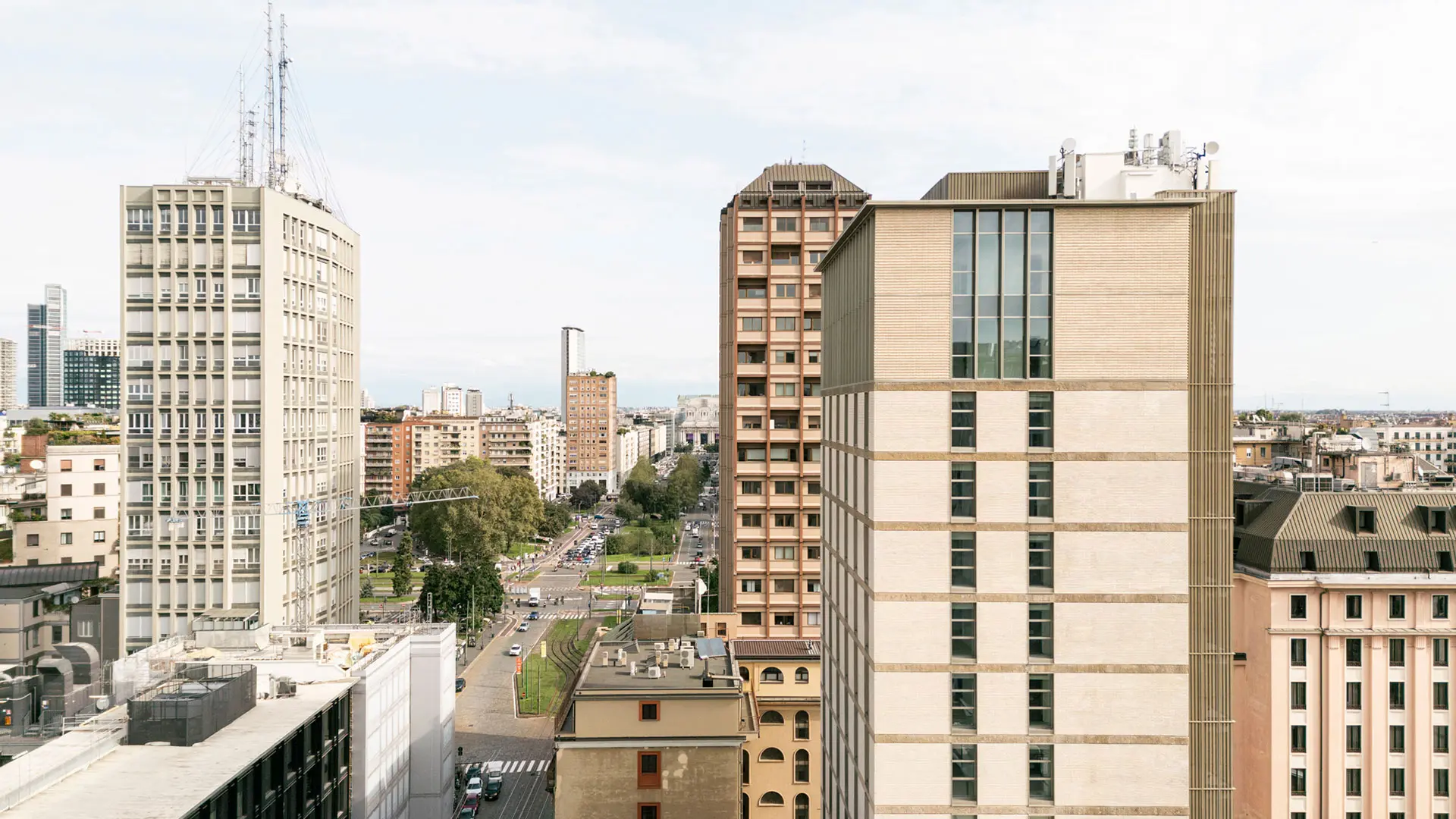In partnership with MiCodmc, a selection of establishments ripe for discovery during the 63rd edition of the Salone del Mobile.Milano, from 8th to 13th April


Winter House, Andres Reisinger, photo courtesy
Art, design and architecture by way of NFTs and the metaverse, as told by the international press

Objects, space and culture move (a lot) in the digital world too: what we need to know according to Surface, Inside Art, Metropolis, Il Post, Pambianco Design, Elle Decor Italia and Cocina Integral
Digital art is gaining ground very quickly in the real world: Surface Magazine reports on the opening of the first museum in Seattle – its inaugural programme features the CryptoPunks series by Larva Labs and works of generative art by Snowfro, lent by NFT collector Aaron Bird, on huge screens donated by Samsung. In Italy too, Ilaria Bonacossa – former director di Artissima, the contemporary art fair in Turin – has recently been named as the director of the Digital Art Museum in Milan in the former premises of the Diurno Venezia hotel, underneath Piazza Oberdan. Although NFTs have taken the art world by storm over the last year, until a month ago there had been no institution dedicated exclusively to blockchain-based art. Things move fast in this sector and design and architecture are gearing themselves up to negotiate the virtual maze. This week we also reported on a virtual gallery, launched directly in the metaverse by the artists Harry Yeff and Trung Bao.
In an in-depth article in January’s Metropolis, Liz Stinson asks how the metaverse of the future will be designed – two huge companies currently building in the metaverse are Decentraland and Sandbox. “What does it mean to best serve humanity in this new digital realm? And who gets to decide? The virtual world, for all its affordances, still needs to be designed and built. The question is, who will be responsible for it? For centuries, architects, engineers, and builders have largely dictated the shape of the built environment, mostly out of necessity. The physical world’s complexities require safeguards in the form of regulations, zoning, accreditations, and best practices. There are good reasons why not just anyone can build a skyscraper. The metaverse, on the other hand, is generally regarded as a collective reimagining of the built environment. It’s often compared to the Wild West, where anyone with a pioneering spirit and a little bit of crypto can plant their flag and build their own slice of virtual world in whatever form they please. The reality, of course, is less egalitarian than that. The metaverse is increasingly mediated by the same forces that control real estate in the physical world—namely, money, access, and knowledge. Already, speculative crypto investors and real estate companies are buying large tracts of “land” in the metaverse, where a parcel of virtual space can command thousands of dollars.”
There are already quite a few instances of real estate dealings in the metaverse, summed up very well by Il Post, which explains that “there are people who buy expensive digital spaces and constructions, in the form of NFTs, i.e. with certificates guaranteeing authenticity and ownership, and paid for in cryptocurrency: either in order to build in the metaverse and carry out virtual activities there, or for hanging onto for a while in the hope of selling them on at a higher price in the future. It’s a somewhat strange and difficult concept to get one’s head around, but it really is happening, with companies investing millions and a large number of private people spending thousands of euros to acquire ownership of little virtual squares. They may turn out to be remunerative and far-sighted investments or just another great bubble ready to burst; a bubble made up of real estate, finance and digital, all in one fell swoop.” Pambianco Design has brokered acquisitions in the metaverse worth millions, briefly redrawing the real estate, the protagonists and the sectoral company scenario, reporting figures that are eye-watering in the real world.
See also Conquering Prime Real Estate in the Metaverse
Andres Reisinger, for instance, has recently put his second virtual real estate project on the market, designed in partnership with Alba de la Fuente, “a virtual building with clear and precise shapes lined with restful dusty shades, to give back a sense of quiet, silence and tranquillity, which from digital becomes real” according to Interni; recently, too, the Japanese-British architect Adam Nathaniel Furman created a collection of NFTs of buildings in a city conceived by him, Capreesh.
Other experiments are rather more hybrid: ONE Sotheby’s International Realty and Voxel Architects are building a villa in Miami that comes with a mirror-image property in the metaverse, whilst in Manhattan “the first NFT restaurant in the world is preparing to open its doors in 2023 in an all-new hospitality concept. Leveraging non-fungible tokens, the new Flyfish Club is embracing the exclusivity of a private club with a special subscription available on the blockchain through NFTs. Announced by one of the hospitality sector’s leading business experts VCR Group, the project has already garnered great success: the first 1,151 tokens that went on sale on 7th January 2022 have already all been assigned, despite the fact that prices range from 7,200 and 12,200 euros each. […] Each subscription will be transferable, or rather saleable, thanks to a leasing mechanism that the company says will make each subscription into a potential ‘passive income strategy.’”
Cocina Integral reports that a round table was held on 1st February at the Roca Madrid Art Gallery, entitled Metaverse: the Ecosystem of a New Reality, during which the needs and the opportunities offered by the new digital sphere to both companies and to the new consumer profile, more demanding in the quest for experiences – along with prestigious architects, artists and designers, were flagged up. “Companies are increasingly adhering to the metaverse trend, conscious that society today is undergoing a shift of paradigm. The new generations are more demanding and have greater powers of decision; in turn, many young people were born into digital, and therefore companies without digital presences are destined to oblivion. Technological giants such as Epic Games and Roblox have already opted for the metaverse as a way of integrating its users.” The growth in e-commerce that continued after the pandemic “has led to companies wondering about the best tools for building and running a business in the digital age; what new concepts they need to take on board, and what the future role of users will be. Basically, companies are trying to find out how to tackle this transition, in which the digital economy will be integrated with the real economy. Last but not least, they are trying to work out how to stand out in a world in which there is an increasing number of digital natives.”
Vertical image: The Sandbox Metaverse, via Surface Mag












